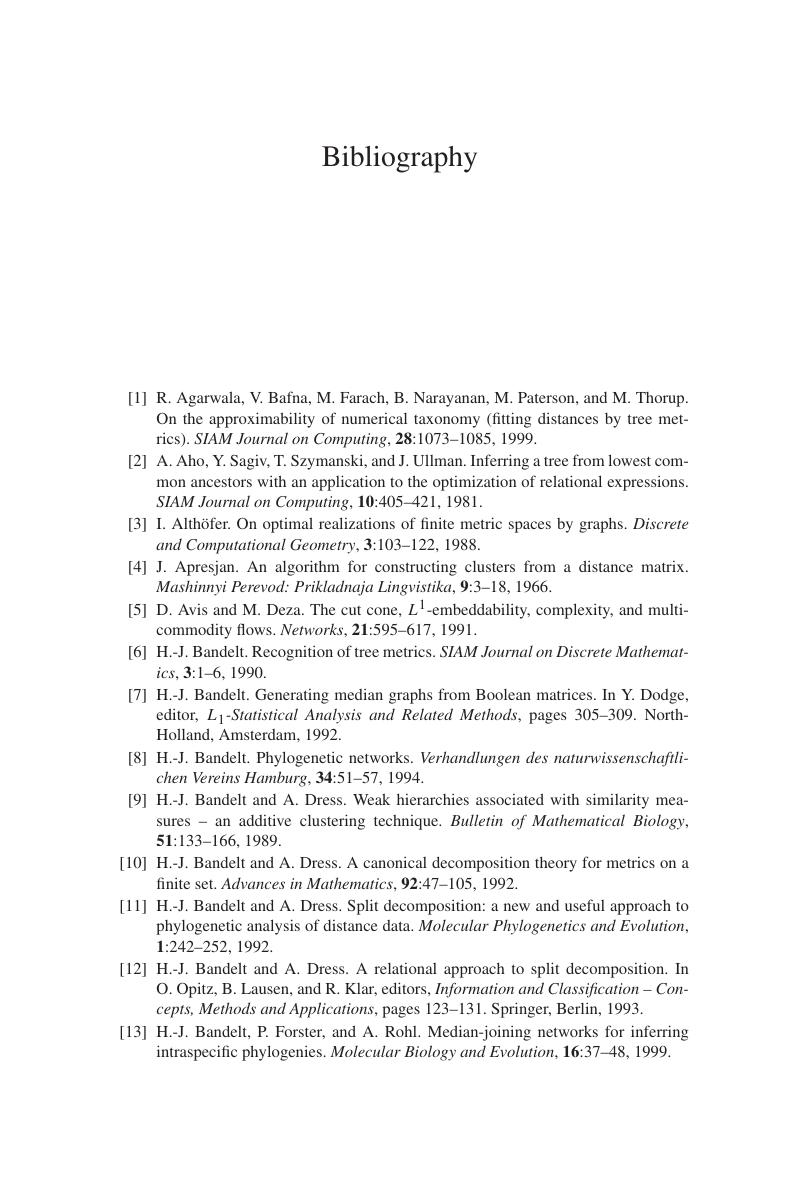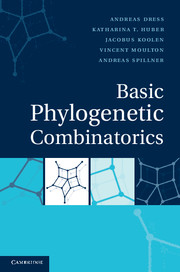Book contents
- Frontmatter
- Contents
- Preface
- 1 Preliminaries
- 2 Encoding X-trees
- 3 Consistency of X-tree encodings
- 4 From split systems to networks
- 5 From metrics to networks: The tight span
- 6 From quartet and tree systems to trees
- 7 From metrics to split systems and back
- 8 Maps to and from quartet systems
- 9 Rooted trees and the Farris transform
- 10 On measuring and removing inconsistencies
- Commonly used symbols
- Bibliography
- Index
- References
Bibliography
Published online by Cambridge University Press: 05 June 2012
- Frontmatter
- Contents
- Preface
- 1 Preliminaries
- 2 Encoding X-trees
- 3 Consistency of X-tree encodings
- 4 From split systems to networks
- 5 From metrics to networks: The tight span
- 6 From quartet and tree systems to trees
- 7 From metrics to split systems and back
- 8 Maps to and from quartet systems
- 9 Rooted trees and the Farris transform
- 10 On measuring and removing inconsistencies
- Commonly used symbols
- Bibliography
- Index
- References
Summary

- Type
- Chapter
- Information
- Basic Phylogenetic Combinatorics , pp. 253 - 260Publisher: Cambridge University PressPrint publication year: 2011



